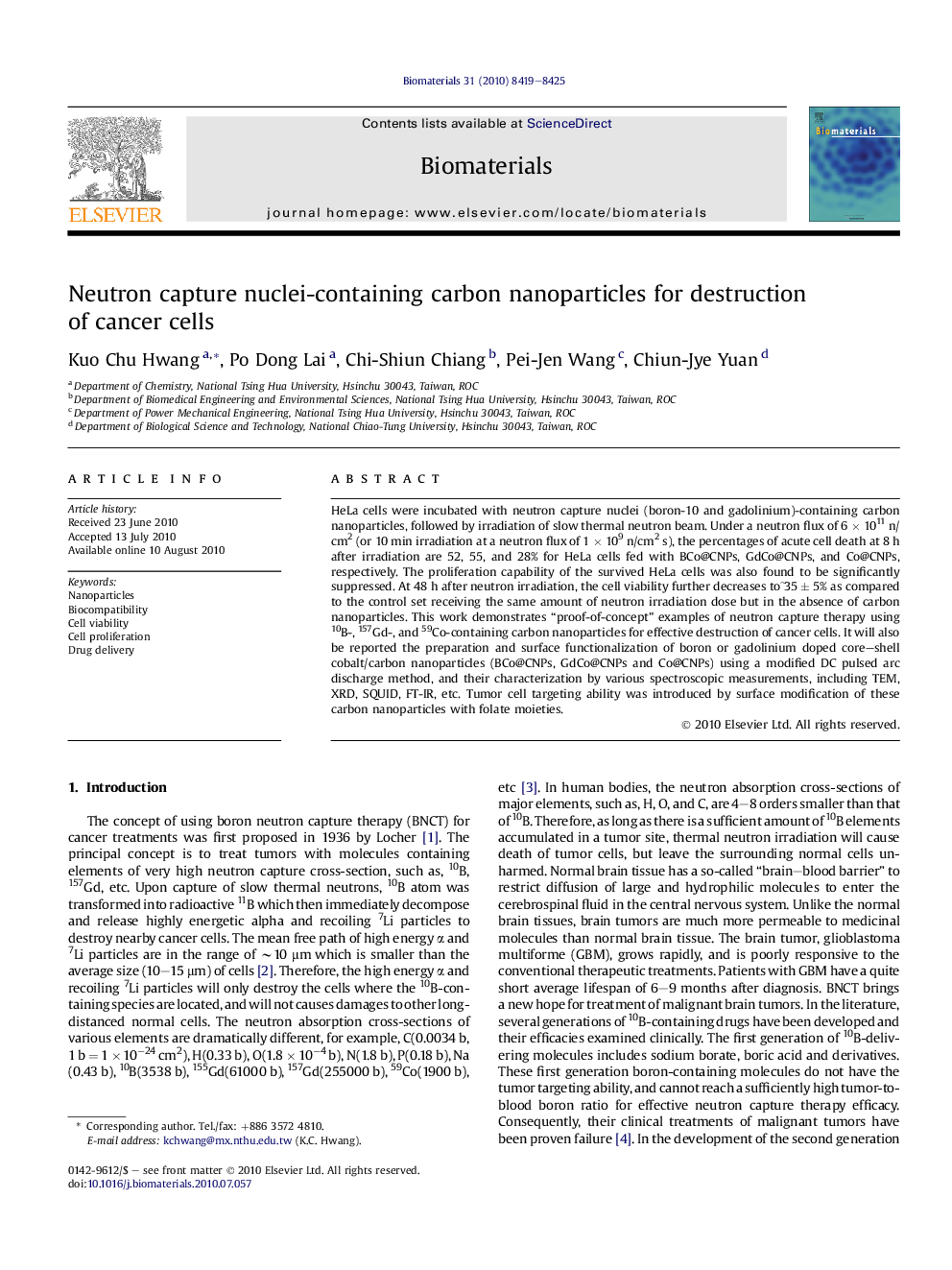| Article ID | Journal | Published Year | Pages | File Type |
|---|---|---|---|---|
| 7963 | Biomaterials | 2010 | 7 Pages |
HeLa cells were incubated with neutron capture nuclei (boron-10 and gadolinium)-containing carbon nanoparticles, followed by irradiation of slow thermal neutron beam. Under a neutron flux of 6 × 1011 n/cm2 (or 10 min irradiation at a neutron flux of 1 × 109 n/cm2 s), the percentages of acute cell death at 8 h after irradiation are 52, 55, and 28% for HeLa cells fed with BCo@CNPs, GdCo@CNPs, and Co@CNPs, respectively. The proliferation capability of the survived HeLa cells was also found to be significantly suppressed. At 48 h after neutron irradiation, the cell viability further decreases to ˜35 ± 5% as compared to the control set receiving the same amount of neutron irradiation dose but in the absence of carbon nanoparticles. This work demonstrates “proof-of-concept” examples of neutron capture therapy using 10B-, 157Gd-, and 59Co-containing carbon nanoparticles for effective destruction of cancer cells. It will also be reported the preparation and surface functionalization of boron or gadolinium doped core–shell cobalt/carbon nanoparticles (BCo@CNPs, GdCo@CNPs and Co@CNPs) using a modified DC pulsed arc discharge method, and their characterization by various spectroscopic measurements, including TEM, XRD, SQUID, FT-IR, etc. Tumor cell targeting ability was introduced by surface modification of these carbon nanoparticles with folate moieties.
